Safety experts from around the world headed to Xi’an, China in September for Intelligent Safety Conference 2025. Martin Kahl picks out the event’s highlights
Safety is a key aspect of the FISITA Technology of Mobility Ecosystem and in September 2025, FISITA once again proudly hosted the Intelligent Safety Conference (ISC) in China.
The agenda for the seventh annual ISC, delivered in partnership with China SAE and hosted in Xi’an, Shaanxi Province, was built around a mix of keynotes, panel discussions, and technical presentations on the event’s main theme, “Discovering safety solutions, enabling autonomous driving.”
Conference chair Jun Li, Honorary President of China SAE and Professor at Tsinghua University, was joined by Dr. Frank (Fuquan) Zhao, Honourable Lifetime President of FISITA and Director of Tsinghua Automotive Strategy Research Institute, and Chris Mason, FISITA’s Chief Executive. FISITA President ChangHwan Kim delivered an address during the opening ceremony.
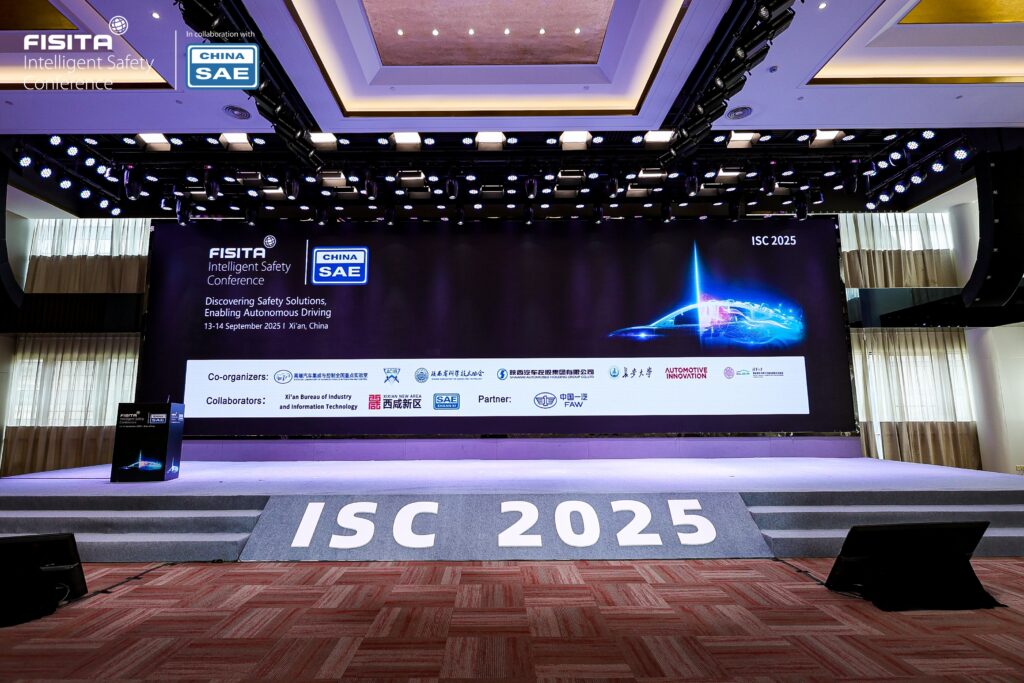
Setting the scene
The 12 months since the last edition of this conference have seen some significant developments in vehicle safety regulation in China and globally.
As well as updates to specific issues such as rear-end collision safety requirements and the 2024 China NCAP revisions, China has issued new rules for electric vehicle (EV) batteries that will come into effect in July 2026. This includes fire- and explosion-prevention mandates that exceed previous requirements for warning signals, and stricter crash, thermal, and charging tests to strengthen consumer confidence in—and global competitiveness of—Chinese EVs.
In terms of Level 2 (L2) driver assistance technology, mandatory safety requirements for L2 driver assistance systems have been introduced by the Ministry of Industry and Information Technology (MIIT), China’s government authority overseeing industrial development and setting safety and technology standards and testing, including the automotive sector.
These specific requirements focus on operating conditions, human-machine interaction, functional safety, and lifecycle oversight. New rules have been introduced banning misleading marketing, ensuring clear boundaries between driver assistance and autonomous vehicle capabilities, and addressing misuse, enhancing driver monitoring, and improving accountability across product development, vehicle production, and commercial deployment.
Beyond L2, China’s first comprehensive law for so-called L3+ autonomous vehicles came into effect in Beijing in April 2025. This mandates road access approvals, infrastructure integration, and annual inspections of intelligent systems. The regulation defines responsibilities for manufacturers, operators, and regulators, and enforces compliance.
Set against these regulatory and technical developments in the local automotive industry, and the evolution of a multi-speed international regulatory landscape, Xi’an played host to safety experts from around the world representing academia and industry.
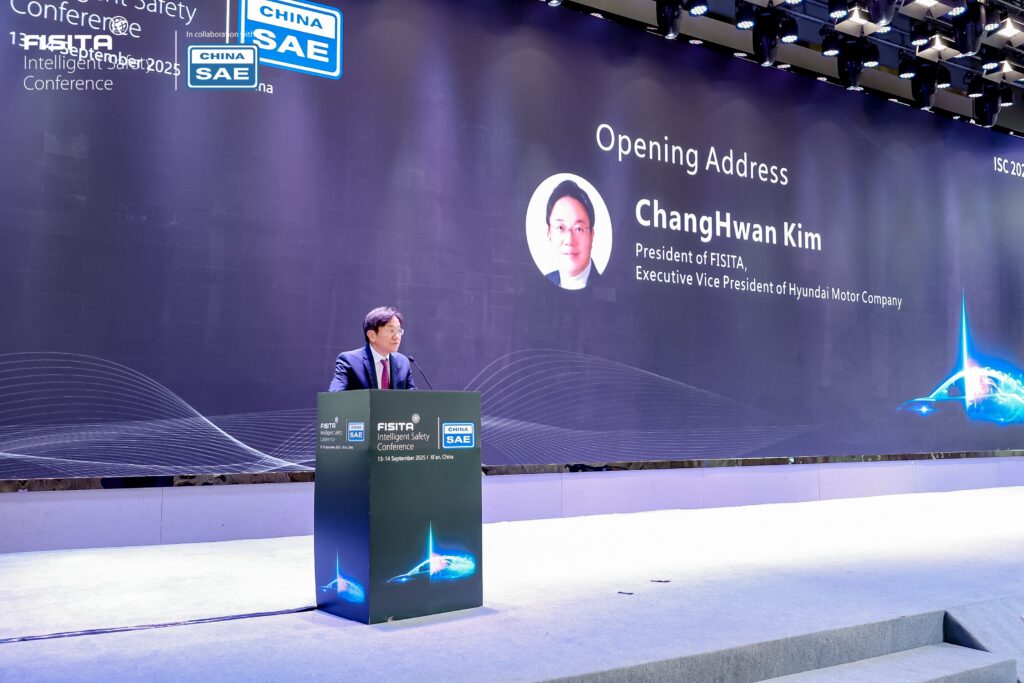
Opening ceremony
The opening ceremony was overseen by plenary session chair Xiangmo Zhao, whose titles include President of Xi’an University of Architecture and Technology, Professor at Chang’an University, President of International Innovation Alliance of Testing Technology for Internet of Vehicles and Connected Automated Vehicles, and Vice President of China SAE; he was supported by the session’s moderator, Lu Lili, deputy secretary-general of China SAE. Speakers included Zhang Jinhua, Chairman of China SAE, ChangHwan Kim, President of FISITA, and Li Yuqi, Secretary of the Party Group of Shaanxi Association for Science and Technology.
FISITA President ChangHwan Kim
In his speech, FISITA President ChangHwan Kim underlined FISITA’s role in supporting the advancement of technological innovation and development to make mobility safer, greener, and more human-centric. This is more important than ever, he said, with mobility facing a rapid transformation driven by electrification, autonomous driving, and the evolution of smart city technology.
Safety is a cornerstone of FISITA’s mission, he said, and is crucial for innovation and trust in new technologies. ChangHwan referenced the FISITA Intelligent Safety Expert Group, chaired by Bosch, which focuses on deploying intelligent vehicle safety systems to protect vulnerable road users (VRUs); and he noted FISITA’s collaboration with the International Telecommunication Union (ITU), the United Nations’ specialised agency for digital technology. FISITA is closely involved in the UN ITU, which has three expert groups looking at vehicular communications for road traffic safety, the technical and economic sustainability for vehicular communications, and the use of V2X technology for advanced emergency braking to protect VRUs.
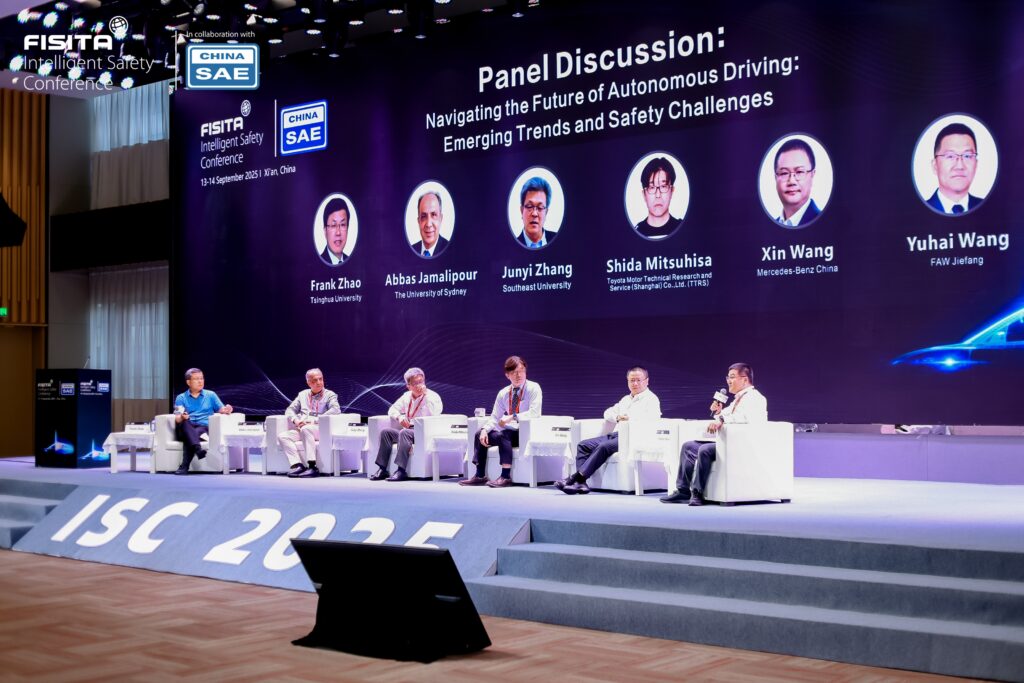
Big picture perspectives
The conference agenda, drawn up by the ISC Programme Committee, featured an impressive list of academics and corporate safety experts, many of them from FISITA corporate member companies.
Jun Li, Honorary President of China SAE, spoke on safety of the intended function (SOTIF), Jiangxing Wu (National Digital Switching System Engineering & Technological Research Center) discussed intelligent connected vehicle security, and Abbas Jamalipour (University of Sydney) addressed GenAI-based secured communications.
Insights from specific safety research initiatives were shared by Xiangmo Zhao (Chang’an University and China SAE), Junyi Zhang (Southeast University and Engineering Academy of Japan) and Deping Wang (FAW Group and State Key Laboratory of Advanced Vehicle Integration and Control).
Delegates also heard automaker perspectives from Shida Mitsuhisa (Toyota Motor Technical Research and Service (Shanghai, TTRS)), and Dongsheng Yang (BYD Group and Automotive New Technology Research Institute), with specific insight into automated driving in passenger cars from Feng Yang (Hyundai Motor Advanced Tech R&D Center China), and commercial vehicles, thanks to Lingyang Xue (Shaanxi Heavy Duty Automobile).
The event’s main panel discussion was moderated by Frank Zhao. He was joined onstage by Abbas Jamalipour, Junyi Zhang, Xin Wang (Mercedes-Benz China), Shida Mitsuhisa, and Yuhai Wang (FAW Jiefang), who discussed the likely emerging trends and safety challenges that will shape the future of autonomous driving.
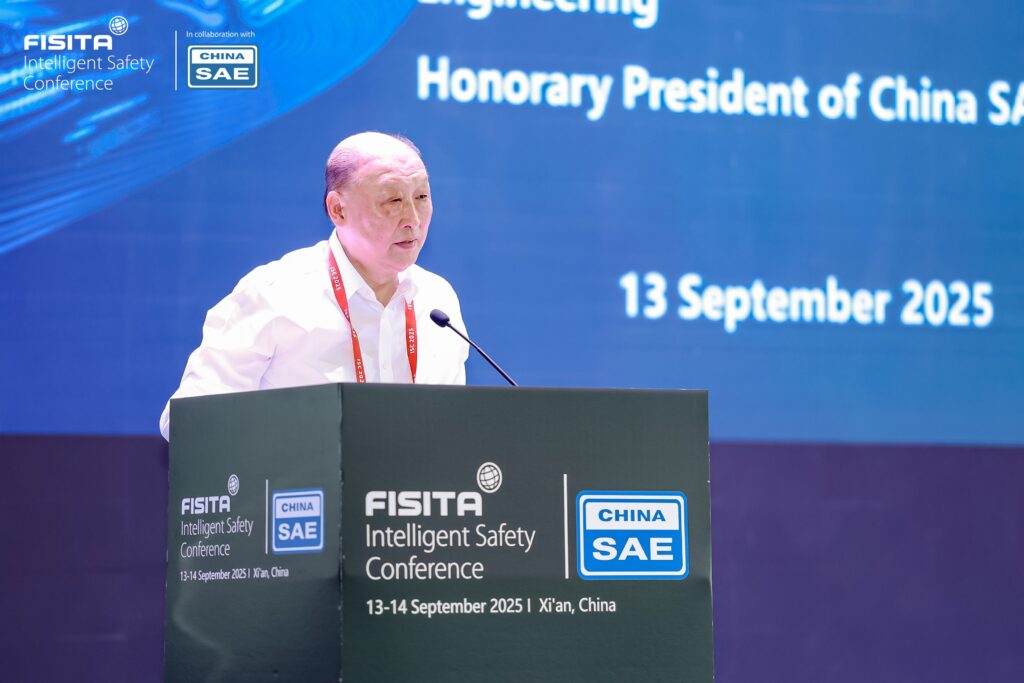
Technical sessions
As well as big picture discussions, the agenda included technical sessions, and presentations were delivered by a mix of academic experts, and corporate speakers representing BMW, ECOSAR Tech, IAV, NVIDIA, Tesaco, and Xiaomi EV. These technical sessions focused on six core areas of specialisation, namely AI and safety, safety of the intended function (SOTIF), connected cooperative driving and safety, test and evaluation, cybersecurity, and maritime intelligent safety.
The sessions on AI and Safety, and SOTIF, addressed the need to improve the safety and reliability of autonomous systems, and potential ways to do this. Connected cooperative driving—where vehicles, infrastructure, and other road users’ (pedestrians and other VRUs) devices communicate with each other—has the potential to improve driving safety. Presentations in the Connected Cooperative Driving and Safety session highlighted the latest advances in this concept, addressing technologies that enhance safety, efficiency, and sustainability in intelligent transportation systems.
The Test and Evaluation session showcased the latest methods and tools for verifying the safety and reliability of autonomous vehicles, and the session on Cybersecurity—an increasingly critical topic in industry—featured presentations that explored the urgent task of protecting intelligent and connected vehicles against evolving cyber threats.
Illustrating the breadth of mobility engineering, and the importance of exploring the synergies between different modes of transport, the Maritime Intelligent Safety session focused on the application and advancement of intelligent safety technology in ships and maritime transport.
Intelligent Safety Conference is an annual event; details of the 2026 edition will be available soon.
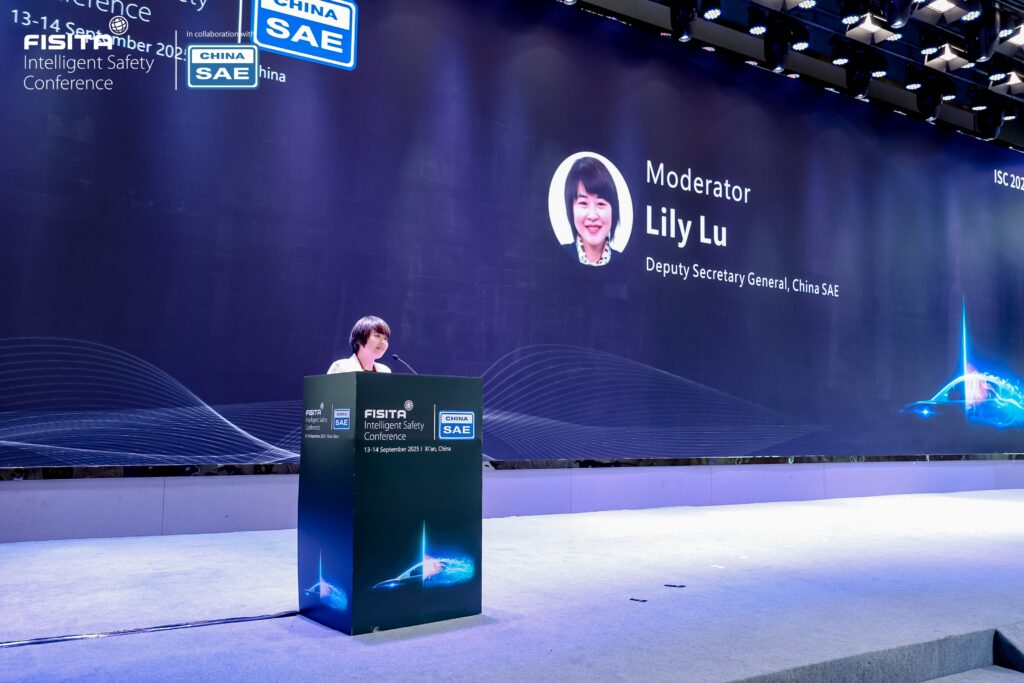
Further information
You can find more information about FISITA in-person activities on our website: Events – FISITA
To learn about FISITA’s Intelligent Safety Expert Group: Expert Group – Intelligent Safety – FISITA; and for more information, contact FISITA CTO Martin Kahl ([email protected]).